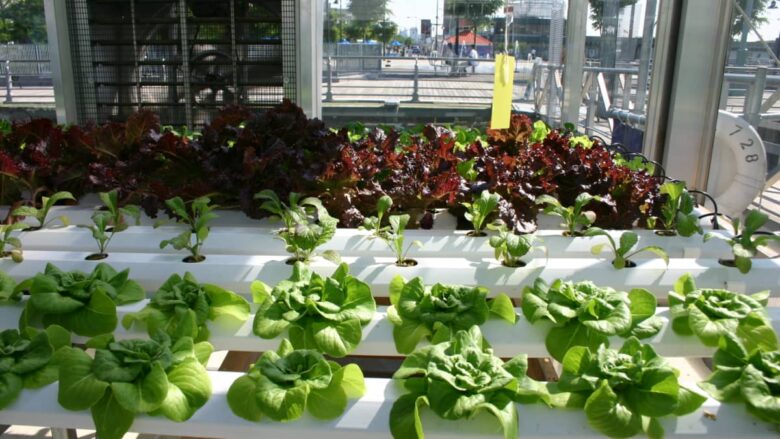What is Hydroponic Gardening?
The Basics of Hydroponics
Hydroponic gardening is a method of growing plants without soil. Instead, it relies on nutrient-rich water to deliver essential minerals directly to the plant roots. This innovative approach to gardening has gained popularity for its numerous advantages, especially for those living in apartments with limited outdoor space.
History of Hydroponic Gardening
Hydroponics isn’t a recent discovery. In fact, it has been around for centuries, dating back to the ancient Babylonians and Aztecs. These early civilizations used various forms of hydroponics to grow crops in arid regions, showcasing the remarkable resilience and versatility of this gardening technique.
Why Choose Hydroponic Gardening for Your Apartment?
Space Efficiency
One of the primary reasons apartment dwellers turn to hydroponic gardening is its space efficiency. Traditional gardening requires ample outdoor space and fertile soil, which is often a luxury in urban settings. Hydroponics eliminates the need for soil, allowing you to grow plants in compact, vertical systems or even on your windowsill.
Water Conservation
In a world where water conservation is crucial, hydroponic gardening stands out as an eco-friendly option. It uses significantly less water than traditional soil-based gardening, as the water in the system is recirculated and reused. This not only saves water but also reduces water bills.
No Soil, No Mess
Traditional gardening can be messy, especially in confined spaces. Hydroponic gardening eliminates the need for soil, which means no more dirt on your floors or hands. It’s a clean and tidy way to enjoy the benefits of home gardening.
Year-Round Harvest
With hydroponic gardening, you can enjoy a year-round harvest. You’re not limited by seasons or weather conditions, as you have complete control over the environment in which your plants grow. This means fresh produce is always within reach.
Getting Started with Hydroponic Gardening
Choosing the Right Location
The first step in starting your hydroponic garden is choosing the right location. Ideally, you’ll want a spot with access to natural light, such as a sunny windowsill or balcony. However, if natural light is limited, don’t worry; you can use artificial grow lights to supplement it.
Essential Equipment and Supplies
Before you begin, gather the necessary equipment and supplies. These typically include containers, growing medium, nutrient solution, pH testing kits, and, if needed, a water pump. It’s essential to invest in quality equipment to ensure the success of your hydroponic garden.
Selecting Plants for Hydroponics
Not all plants are suitable for hydroponic cultivation. Leafy greens like lettuce and herbs like basil and mint are excellent choices for beginners. As you gain experience, you can expand your repertoire to include tomatoes, peppers, and even strawberries.
Building Your Hydroponic System
Kratky Method
The Kratky method is a passive hydroponic system that requires no electricity or pumps. It’s a straightforward system ideal for beginners. In this method, plants are placed in containers partially submerged in a nutrient solution, with their roots absorbing the necessary nutrients.
Deep Water Culture (DWC)
Deep Water Culture is another popular hydroponic system that involves suspending plant roots in a nutrient-rich water solution. Air stones or diffusers are used to provide oxygen to the roots, promoting healthy growth.
Nutrient Film Technique (NFT)
The Nutrient Film Technique involves a continuous flow of nutrient solution that flows over the roots of the plants. It’s known for its efficiency and is often used for growing smaller plants like lettuce.
Wick System
The Wick System is one of the simplest hydroponic systems, making it suitable for beginners. It uses a wick to draw nutrient solution from a reservoir to the plant roots. While it’s easy to set up, it may not be as efficient as other systems for larger plants.
Nutrient Solution and pH Balance
Maintaining Proper Nutrient Levels
Maintaining the right nutrient levels is crucial for the health of your hydroponic plants. You’ll need to regularly monitor and adjust the nutrient solution to ensure your plants receive the appropriate balance of minerals.
Monitoring pH Levels
The pH level of your nutrient solution is equally important. Most plants thrive in a slightly acidic environment, so regularly test and adjust the pH to keep it within the optimal range.
Caring for Your Hydroponic Garden
Lighting Requirements
Proper lighting is essential for the success of your hydroponic garden. If natural light is insufficient, invest in high-quality grow lights designed for indoor gardening. Ensure your plants receive the right amount and duration of light each day.
Temperature and Humidity Control
Maintaining the correct temperature and humidity levels is vital for plant growth. Different plants have varying requirements, so research the specific needs of your chosen crops and adjust the environment accordingly.
Pest and Disease Management
While hydroponic gardens are less prone to pests and diseases than traditional gardens, it’s still essential to monitor for any issues. Implement preventive measures and address problems promptly to protect your plants.
Harvesting and Enjoying Your Homegrown Produce
Best Practices for Harvesting
Harvesting is the culmination of your efforts. Follow best practices to ensure your produce is fresh and flavorful. Harvest leafy greens when they reach a desirable size, and pick fruits and herbs when they are ripe.
Recipes for Hydroponically Grown Vegetables and Herbs
One of the joys of hydroponic gardening is enjoying the fruits of your labor in the kitchen. Experiment with fresh and delicious recipes using your homegrown vegetables and herbs to savor the unique flavors and quality of your produce.
Troubleshooting Common Issues
Yellowing Leaves
Yellowing leaves can be a sign of nutrient deficiencies or pH imbalance. Identify the cause and take corrective actions to restore your plants’ health.
Algae Growth
Algae can sometimes develop in your hydroponic system. To prevent this, keep your system clean, use opaque containers to block light, and consider adding an algaecide if necessary.
Root Rot
Root rot can occur if your plants’ roots are constantly submerged in water. Ensure proper aeration and drainage to prevent this common issue.
The Environmental Benefits of Hydroponic Gardening
Reduced Water Usage
Hydroponic gardening is known for its water efficiency. Compared to traditional soil-based gardening, it uses significantly less water, making it an environmentally responsible choice.
Minimal Soil Erosion
Traditional farming practices often contribute to soil erosion. Hydroponic gardening eliminates this issue entirely, as there is no soil involved in the process.
Lower Carbon Footprint
By growing your own produce at home, you reduce the carbon footprint associated with transportation and the energy required for large-scale agriculture. It’s a small but meaningful contribution to environmental sustainability.
Joining the Hydroponic Community
Online Resources and Communities
Connect with fellow hydroponic enthusiasts through online forums and social media groups. Share your experiences, ask questions, and learn from others in the hydroponic gardening community.
Workshops and Hydroponic Classes
Consider attending workshops or classes to deepen your knowledge of hydroponic gardening. Local gardening centers and agricultural institutions often offer courses to help you become a more skilled hydroponic gardener.
Conclusion
Hydroponic gardening offers apartment dwellers an exciting opportunity to grow their own fresh produce while overcoming the limitations of limited space and urban living. With the right knowledge and equipment, anyone can embark on this rewarding journey of self-sufficiency and sustainability.
Start your hydroponic garden today, and enjoy a bountiful harvest of homegrown goodness. Join the growing community of apartment gardeners who are reaping the benefits of this innovative gardening method.



